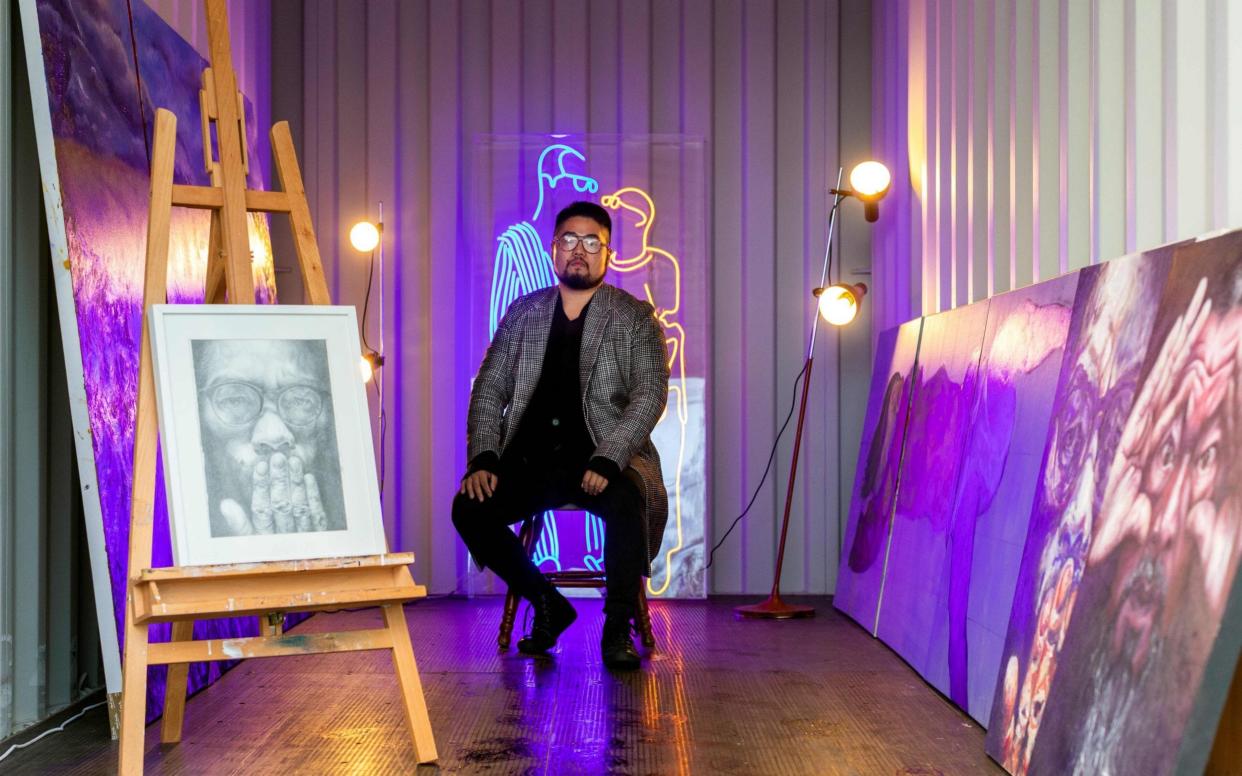Dissident Chinese cartoonist shows his face on Tiananmen anniversary

One of China’s most prominent political cartoonists who has hidden his identity for years to avoid reprisals from the state revealed his face publicly on Tuesday to mark the 30th anniversary of Beijing’s June 4 crackdown on Tiananmen protests.
Chinese troops brutally crushed the student-led pro-democracy demonstrations in and around Tiananmen Square, first opening fire on the night of June 3, 1989, killing hundreds, perhaps thousands, witnesses and rights groups say.
Chinese Communist Party rulers have since sought to white-wash the violence, never offering an admission of guilt or wrongdoing or releasing a death toll.
Badiucao, a 33-year-old China-born cartoonist and artist who has drawn comparisons to graffiti artist Banksy, said he could no longer remain in the shadows despite threats from China’s security apparatus prompted by biting satires that poke fun at Beijing’s leaders and their perceived abuse of power.
In a documentary on his life called “China’s Artful Dissident” and shown on ABC television on Tuesday, he shows his face and for the first time details how he was forced to scrap an exhibition in Hong Kong last year given threats against loved ones.
“I’m facing this major choice: to be silent forever, or to fight back, to confront, face to face, this situation,” the bespectacled cartoonist told Reuters by phone from Melbourne where he lives, still without revealing his name.
“By stepping out on the anniversary of the Tiananmen massacre I don’t think there’s any better time for me to do that.”
Badiucao posts most of his cartoons online and uses social media extensively. When required to appear in public in the past, he sometimes wore a balaclava.
Despite his precautions, he said Chinese authorities somehow discovered his identity last year, possibly through digital surveillance while he was planning the Hong Kong show, which would have been his first international exhibition.
His works include neon sculptures of deceased Chinese dissident and Nobel Laureate Liu Xiaobo and a cartoon of Chinese President Xi Jinping holding a rifle next to a dead Winnie the Pooh.
Chinese internet users have in the past likened Pooh’s portly appearance to Xi. A small number of people have even used Pooh as a symbol of resistance.
Badiucao said he was told by a source that two “policemen” from China would show up for the Hong Kong event - stoking fears he might be abducted to mainland China, which took back control of the former British colony in 1997.
A Hong Kong-based publisher of books critical of China’s leaders was abducted in Thailand in 2015, one of five people in the Hong Kong book trade who went missing that year and later appeared in custody in mainland China.
“Hong Kong is like an egg falling to the ground,” Badiucao said. “It might not have impacted the ground but it’s already on the way.”
China’s main representative “Liaison Office” in the city gave no response to a Reuters request for comment.
Badiucao took part in Hong Kong’s 2014 pro-democracy protests that blocked roads for months in a direct challenge to Beijing, but he says he won’t return. He criticized a proposed extradition law that would allow suspects in Hong Kong to be sent back to mainland China for the first time.
“The extradition law is definitely a new trap, allowing mainland China much more power to use its controlling with violence directly in Hong Kong,” he said. “It also generates huge fear.”
Last year, he launched a public art project on China’s “Tank Man”, the nameless individual who stood in front of a row of tanks a day after the Tiananmen Square crackdown in an act of defiance. The man’s identity and fate remain unknown.
The artist urged people around the world to pose in public as Tank Man, in white shirt, black pants, and holding two bags.
“In order to pass down memory, it’s always about the next generation, how to engage them, how to awaken them from this kind of political indifference,” he said.
China’s Ministry of Public Security did not respond to a request for comment on the fate of Tank Man. When asked about Tank Man by Reuters at a Foreign Ministry media briefing, spokesman Geng Shuang said: “I have no understanding of these situations you mention.”
Despite blanket Chinese censorship of June 4, the artist said he would reveal the truth through art.
“The physical body can be crushed or damaged, but the spirit lives for much longer,” he said. “I hope within my art and within my action ... will be a way to pass on the spirit of ‘89.”

